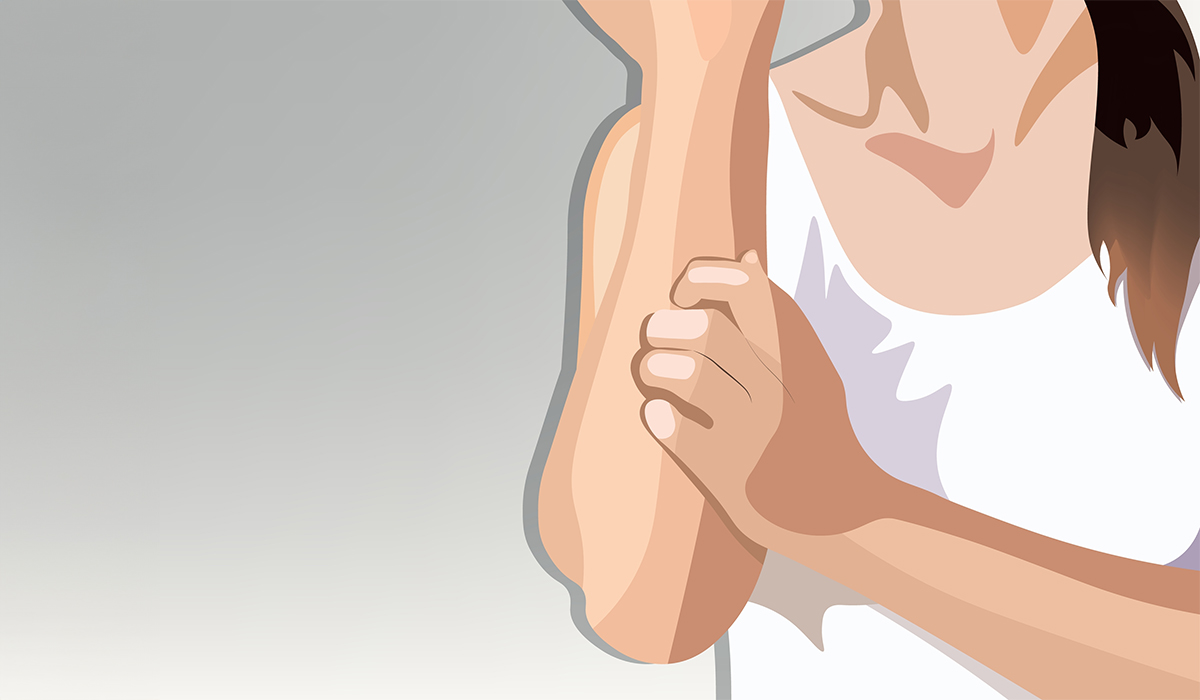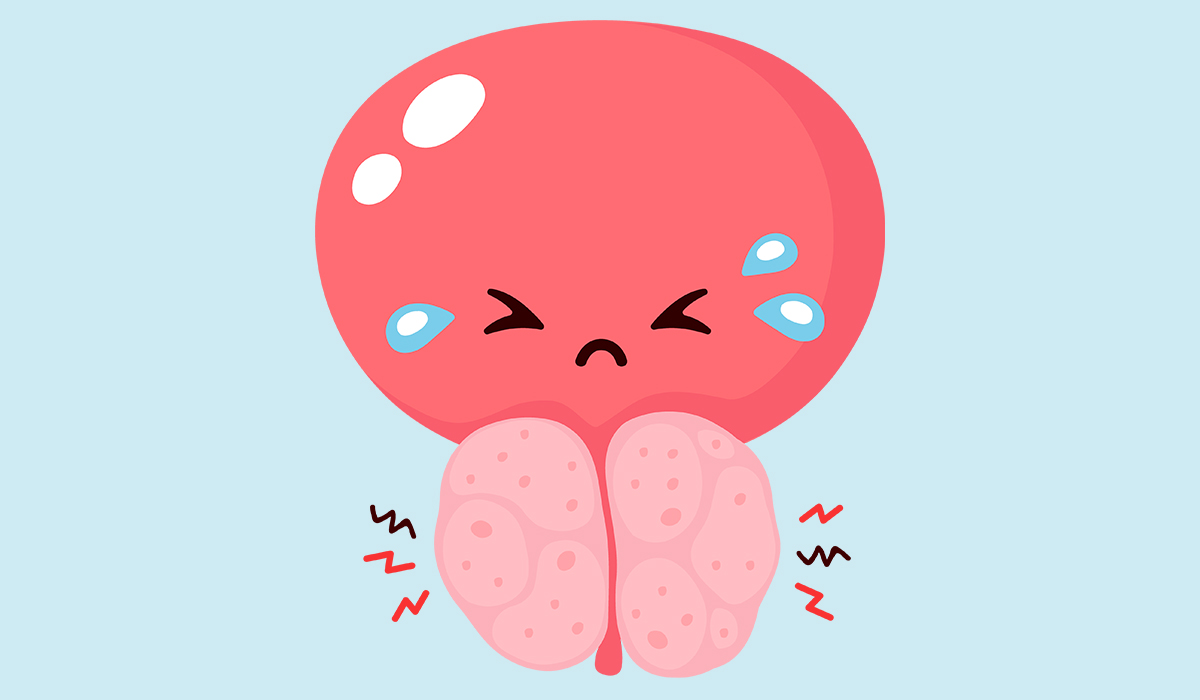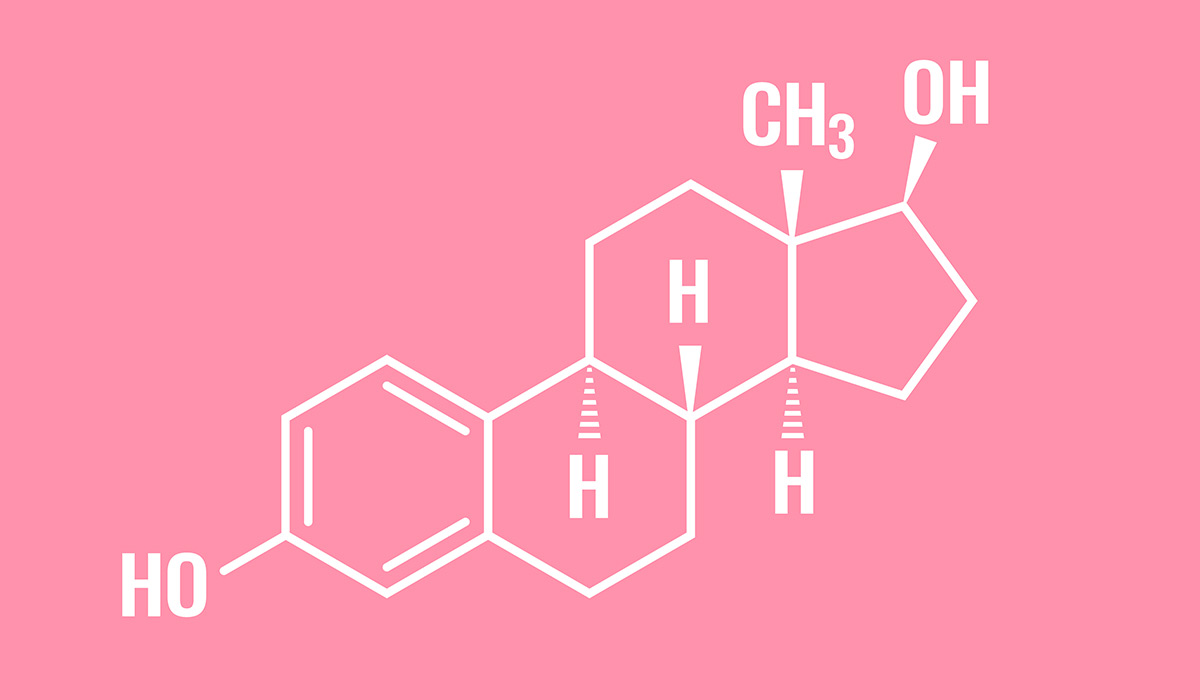It is not always obvious why costochondritis emerges. Nevertheless, it may be triggered by strenuous activities requiring significant chest effort, such as lifting heavy objects or strenuous exercise. It can also emerge from a viral infection in the respiratory system or due to an impact on the chest spot.
Costochondritis can seem like something more grievous, such as a heart attack or other heart-related issues, because the chest pain is typically powerful and may spread to your arms and shoulders. Therefore, if you experience this type of chest pain, it’s key to visit a medical staff so that they can determine whether your condition is less or more severe.
On the other hand, to control costochondritis, a person customarily needs to use pain-relieving medicines such as ibuprofen or naproxen from the drugstore and dodge activities that make the pain worse. A person from a medical facility may sometimes recommend physical therapy or steroid injections to lighten symptoms. A Plethora of people who have costochondritis notice their pain gets less noticeable after some weeks or months, but it can–unfortunately–come back again.
How Common is Costochondritis?
Costochondritis is a condition that many people feel, and it is thought to affect 10-30% of entities at some time. It customarily happens to adults who are 40 to 50 years old (but still, people of all ages can get it). The precise rate at which it happens can change because of features like how you decide if the condition is there and the miscellaneous traits of members in a group.
How Dangerous is Costochondritis?
Costochondritis is routinely perceived as a safe condition and not considerably harmful. It does not significantly threaten an individual’s health or well-being. However, its symptoms can cause mental anguish and discomfort, leading observed people to seek help from medical facilities.
A decisive concern with costochondritis is that its symptoms can appear very similar to those of solid heart issues, like heart attacks. If not diagnosed accurately by experienced staff, it could lead to unnecessary misery and medical procedures. Therefore, it is necessary for individuals who experience chest pain to seek a medical examination to confirm that this health matter is not indicative of a hazardous factor.
Costochondritis customarily leads to no additional cases, but the chest pain it generates can alter someone’s lifestyle and daily existence, including mundane jobs. Should the symptoms be powerful or recurrent, seeking medical aid could become necessary for managing pain and controlling inflammation.
Thus, costochondritis tends to cause concern due to its symptoms, yet typically, it isn’t alarming. When entities with this issue take genuine care of themselves and handle their condition effectively, they tend to recover and notice a disappearance of symptoms afterward.
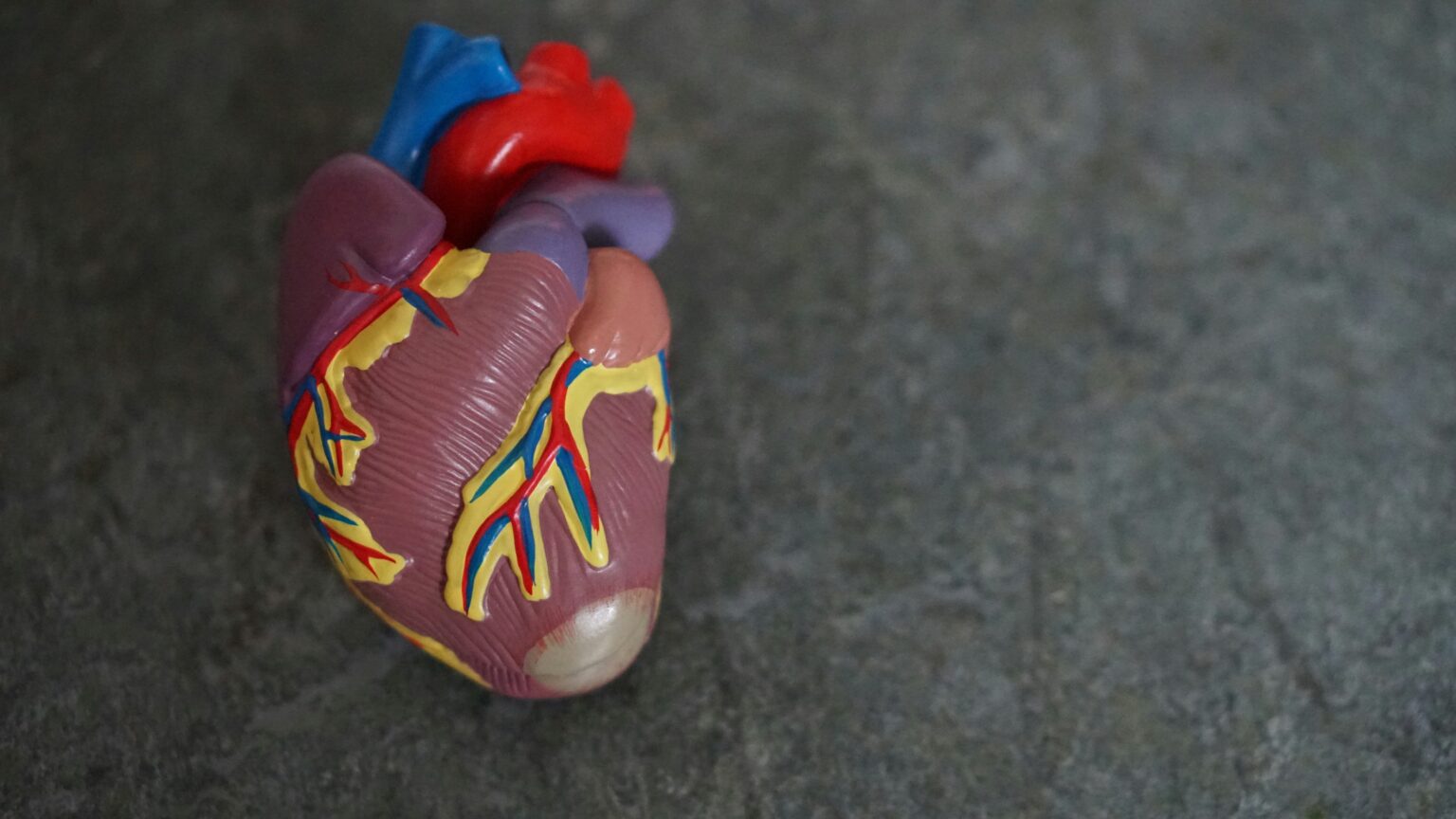
Causes
Costochondritis emerges when the soft tissue connecting the ribs to the breastbone gets inflamed. We often don’t know why this inflammation happens, but some possible clues might cause it. One possible explanation is physical stress or damage to the chest sector from carrying heavy things, doing strenuous exercise, or performing repeated movements that put strain on the muscles and cartilage in the chest.
Infections, particularly those that target the respiratory system with viruses, may result in swelling near your chest and bring on a condition known as costochondritis. Such infections cause the cartilage to become swollen and painful, leading to a pain sensation in your chest region.
Patients who suffer from health issues such as Arthritis or Fibromyalgia or miscellaneous conditions that lead to swelling could face a greater risk of developing chest inflammation. Thus, those already dealing with some medical matters might find themselves more prone to the pain and swelling in the chest associated with this medical phenomenon.
Risk Factors
Costochondritis may affect organisms of all ages, yet certain traits can increase the likelihood of developing this complaint:
- Those engaged in activities or who have medical issues that apply pressure to the chest area are at a higher risk for costochondritis.
- Individuals who repeatedly perform similar movements with their arms and upper body, such as lifting weights, rowing, or playing tennis, tend to encounter this condition.
- Likewise, those who often stand or lift heavy objects incorrectly could face an increased risk.
- As mentioned, entities who have health issues like Arthritis, Fibromyalgia, or respiratory infections are more likely to develop costochondritis. These sicknesses can cause swelling around the chest area, increasing the chance that the cartilage will become inflamed and swollen.
- Costochondritis usually happens to people who are 40 to 50 years old, but sometimes young kids and older adults can get it, too.
- What’s more, women may be slightly more at risk of developing costochondritis compared to men, though the precise reasons are not entirely pinpointed. Hormonal fluctuations during pregnancy or around the time of menopause might increase a woman’s susceptibility to variants of chest pain like costochondritis.

Signs and Symptoms
Costochondritis customarily features symptoms in the chest region. Usually, individuals initially experience uneasiness that may range from mild to extremely bothering and can resemble a sharp stabbing sensation. The feeling of discomfort is often experienced when the rib bones join to the central chest bone, or it could be on any side of the ribcage.
Patients suffering from costochondritis also notice sensitivity and puffiness in the painful sector, particularly when they push on their chest or twist their upper torso. Deep breathing, coughing, or demanding exercise tends to accelerate the associated discomfort.
That being said, the major symptom of costochondritis is discomfort in the chest region; however, it’s valuable to know that this pain can sometimes be confused with heart-related issues such as a heart attack. Therefore, if you experience any unease in your chest, it’s key to consult experts from a trustworthy medical facility and confirm that there are no alarming problems concerning your heart.
Lastly, in addition to chest pain, individuals with costochondritis may experience unease during deep breaths, difficulty performing certain moves, or a sensation of tightness or compression in the chest. However, the strength and duration of these symptoms vary from patient to patient.
Complications
Unwelcome matters from costochondritis don’t happen much, but they may if it gets worse if nobody treats it.
One case could be chest pain, which keeps going, makes everyday life hard, and lowers how good life feels. To handle the persistent pain, trying more potent treatments might be necessary, such as doing workout programs with a physical therapist or taking the right medications.
At times, a rarely seen variant of inflammation in the chest can cause something called Tietze Syndrome. This condition makes your chest painful, and the cartilage on your ribs gets bigger. It is not dangerous for your life, but this condition causes more swelling and pain in the chest that requires extra steps to treat.
What’s more, if someone does not understand or underestimate costochondritis, they may feel unwelcome stress, thinking it is a considerable problem such as heart disease. This situation can lead them to look for more medical help and have many tests to make sure their heart is okay–which is not without value in the greater scheme of things.

Diagnosis and Tests
Medical staff checks the patient’s past health records and does a physical check-up to see if they suffer from costochondritis. They press on the chest sector, looking for any signs of pain or swelling. They may ask if your chest pain increases when you move a lot or take deep breaths.
Experts customarily request bonus examinations to confirm that costochondritis rather than a different condition causes pain in the chest. Possible tests they may consider are diverse.
Specialists are eager to perform examinations that create images, such as X-rays or scans like CT and MRI. They use these methods to observe the chest spots and discover additional issues, such as bone fractures or infections.
Doctors also eagerly do blood examinations to see for signs of swelling or to rule out miscellaneous medical matters, such as Rheumatoid Arthritis or infections that might cause chest pain similar to what is observed in costochondritis.
Persons experiencing chest pain should consult the medical team directly to determine the cause and receive appropriate therapy. Although costochondritis is often, not severe, it’s important to confirm that it isn’t a more dangerous condition, such as heart issues or lung infections, that requires urgent attention from healthcare teams.

Treatment
To deal with costochondritis, a person usually uses self-care methods together with help from doctors to lessen the pain and reduce swelling in the chest. Common treatments are:
Taking time to calm the chest area and avoiding activities that worsen the pain can help lessen swelling and aid in recovery. Rest might mean avoiding hard work, not picking up heavy objects, or refraining from repetitive movements that stress muscles and cartilage around the chest.
You can buy medicines like ibuprofen or naproxen from the pharmacy without a prescription to reduce pain and swelling. They can ease the pain connected with costochondritis. These medications are easy to find, and you must take them according to the instructions given so they can help lessen your suffering.
Applying warmth or coldness to the area of pain can lessen discomfort and decrease inflammation in the chest muscles and cartilage. A warm item, such as a hot water bottle, relaxes stiff muscles and promotes increased blood circulation. Putting cold stuff like ice on the area can make it feel numb and help to lower any puffiness.
Doctors might suggest going to physical therapy to become more flexible, strengthen the muscles around your chest, and learn to stand or sit correctly. Physical therapists have the knowledge to teach certain exercises and ways of moving that reduce pain and increase mobility.
People with solid or long-lasting signs of sickness might get a doctor to put medicine right into the sore place. This medicine, called corticosteroid, helps with swelling and lessens pain. Doctors often use unique pictures like ultrasounds to ensure the medicine goes precisely where it should.
Changing daily habits is beneficial to prevent costochondritis from happening again. It’s essential to keep your posture upright when you are standing and sitting, stay at a good weight for your body size, and lift things correctly so there’s less pressure on your chest region.
When you have much worry and tension, the chest pain from costochondritis can become stronger. Calming activities like breathing deeply, meditating, or doing yoga might help lower your stress and maybe lessen the pain.
People who have costochondritis need to make a treatment plan with their doctor that fits them and goes after their symptoms. By doing self-care at home and following the treatments the doctor gives, many people start feeling better and slowly see their condition get better over time.

Prognosis for Costochondritis Patients
Many organisms with costochondritis typically improve within several weeks to months, yet the duration of symptoms varies. It hinges on factors such as the severity of the inflammation, the effectiveness of treatment for an individual, and additional health matters.
Costochondritis often improves on its own without requiring treatment from medical professionals. Over-the-counter pain relievers and anti-inflammatory drugs help alleviate discomfort and aid healing. Avoiding activities that increase chest pain can also help expedite recovery.
Costochondritis customarily returns or persists for some time in specific individuals, mainly when risk components or triggers are involved. However, it generally does not result in any severe long-term health dilemmas. If you manage it properly and look after your health, most individuals fully recover from costochondritis without permanently affecting their well-being or life enjoyment.
Patients experiencing chest pain should consult a medical professional staff to determine the cause and rule out significant conditions such as heart issues. It assists physicians in providing adequate patient care and observing various symptoms to alleviate discomfort effectively.
When You Should Seek Emergency?
If you have costochondritis, you must know some signs and symptoms that show you must get medical help immediately. Costochondritis usually isn’t an emergency case, but the way it shows up can look like more severe problems, like having a heart attack. Therefore, it’s crucial to seek emergency care if you experience any of the following:
- If you feel an intense squeezing or pressure pain in your chest that lasts for many minutes, it might show something more serious like a heart attack instead of just inflammation in the rib joints.
- When chest pain goes to the arms, back, neck, jaw, or shoulders, and it becomes difficult to breathe with much sweating and feelings of nausea or dizziness, this might indicate a problem with the heart that needs quick medical help.
- If you have difficulty breathing and feel like you cannot get enough air, or if shortness of breath happens suddenly, this might indicate a serious problem with your lungs or maybe something wrong with your heart instead of costochondritis.
- If you lose consciousness or cannot stay awake, it might indicate a severe health issue that could involve the heart. Doctors must check this quickly.
- If the pain in your chest continues or gets worse even after you have rested, used medicines that you can buy without a prescription, or tried taking care of it by yourself at home, then it is necessary to see a doctor. It would be best to have this to ensure no other serious problems are causing the pain.
In every case, quickly call for emergency help or visit the closest hospital’s emergency department for a rapid check and medical attention. It is wise to treat any chest pain with the importance of receiving proper and swift care.
How to Prevent Costochondritis?
Lightening danger factors and avoiding activities that inflict pressure on the chest are essential to prevent costochondritis. Though not all examples of costochondritis can be prevented, taking specific tactics may lighten the chances of its occurrence:
- Ensure you use the correct lifting technique. Bend your knees and use your leg strength rather than relying on your back muscles to lift heavy objects. Avoid attempting to carry items that are beyond a safe weight for you.
- Maintain a straight back; a weak posture can lead to pressure on muscles and the tender areas around your ribs. When you are sitting or standing, ensure you adopt a proper stance without leaning over excessively to reduce the risk of developing costochondritis.
- Try to reduce repetitive motions. Enjoying sports or exercises involving frequent arm and upper body movements may lead to fatigue and increased muscle inflammation around the chest region. Switching what you are doing regularly taking breaks for rest, and doing some stretches now and then is valid.
- Start with simple stretches and fundamental aerobic actions before progressing to intense workouts to ensure your muscles are sufficiently warmed up. This practice helps to increase their flexibility and reduces the risk of injury during physical activity.
- Make it important to dress in proper attire; having the right support and safeguarding for your chest and upper body is crucial when engaging in sports or activities requiring safety gear, such as weightlifting or participating in team sports with significant physical interaction.
- Attend to fundamental health matters. Should you experience conditions such as joint swelling or respiratory infections, these can increase the risk of developing costochondritis. Managing these ailments with appropriate medical care and remedies may prevent or diminish the severity of costochondritis.
- Pay attention to your body’s signals. Should you experience pain or unease near your heart when exercising, it is crucial to stop and rest. Persisting with the workout despite the pain could accelerate inflammation and cause hazardous injury.
Sources
- NIH. (2023). Costochondritis.
https://www.ncbi.nlm.nih.gov/books/NBK532931/ - NIH. (2009). Costochondritis: diagnosis and treatment.
https://pubmed.ncbi.nlm.nih.gov/19817327/ - NIH. (2021). Atypical Costochondritis: Complete Resolution of Symptoms After Rib Manipulation and Soft Tissue Mobilization.
https://www.ncbi.nlm.nih.gov/pmc/articles/PMC8106472/ - NHS. (2022). Costochondritis.
https://www.nhs.uk/conditions/costochondritis/ - AAFP. (2009). Costochondritis: Diagnosis and Treatment.
https://www.aafp.org/pubs/afp/issues/2009/0915/p617.html/1000
- Costochondritis: What Is, Causes, Complications, Symptoms, and Treatment
- What is Costochondritis?
- How Common is Costochondritis?
- How Dangerous is Costochondritis?
- Causes
- Risk Factors
- Signs and Symptoms
- Complications
- Diagnosis and Tests
- Treatment
- Prognosis for Costochondritis Patients
- When You Should Seek Emergency?
- How to Prevent Costochondritis?
